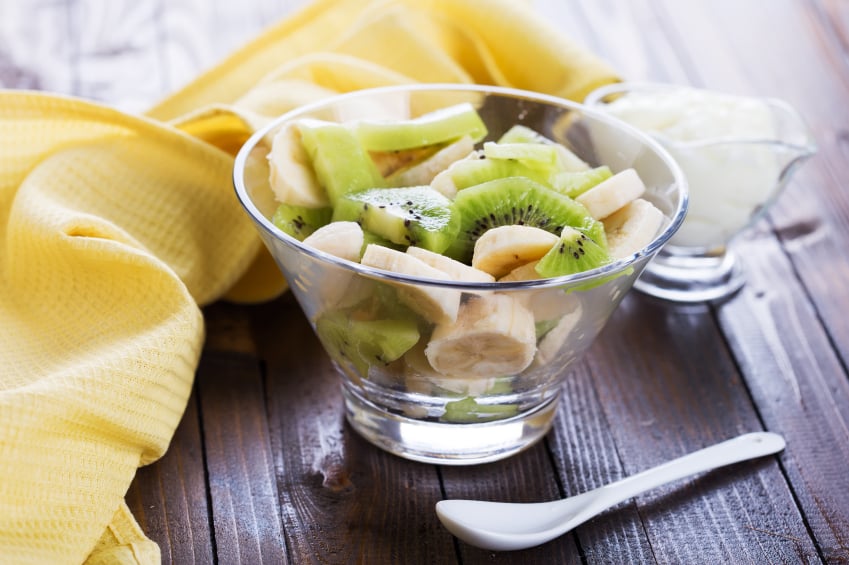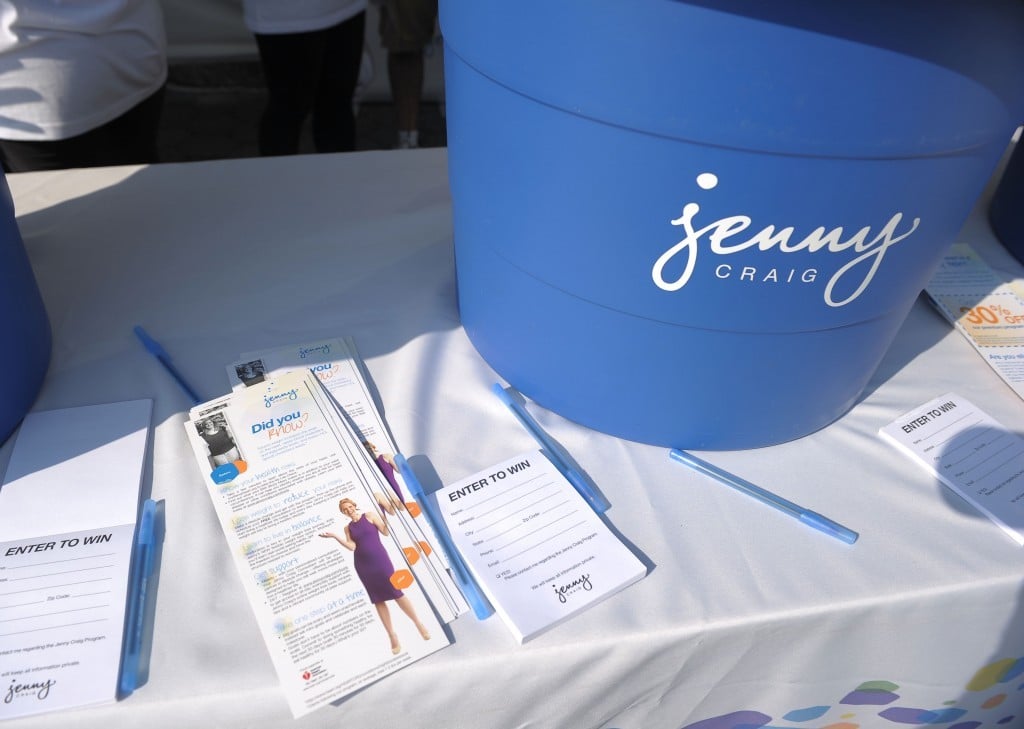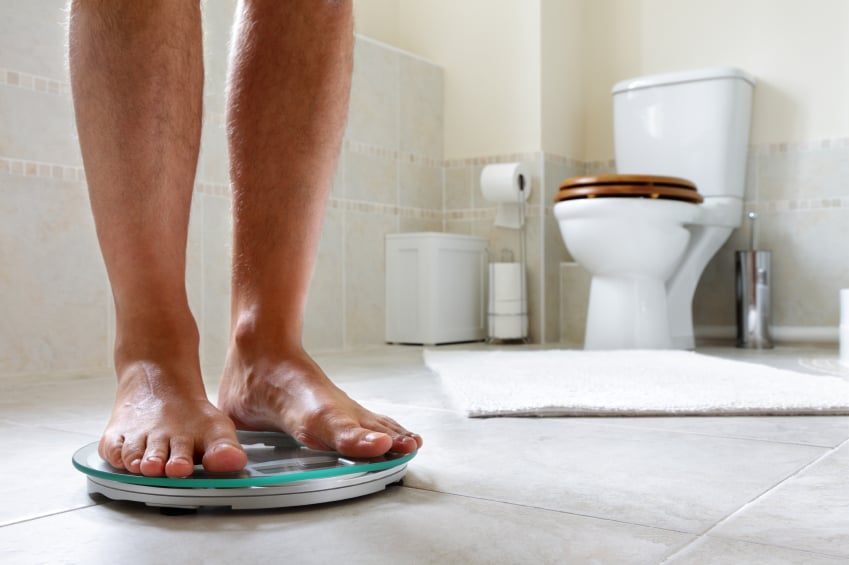
Source: iStock
You can hit the crowded gym all you want in the next month to start on your weight-loss goals in 2016, but unless you’re also changing your eating habits, you’re not likely to see the pounds shed easily. Exercise is an important factor in any weight-loss plan, but the truth is that to lose weight, you need to run a calorie deficit. The easiest way to do this is to eat fewer calories by watching your portion sizes or the types of foods you’re eating. The result? You might seriously want to look at a diet plan to start your year off right.
The problem is knowing which diet will work best for you. Some cut out food groups like dairy or most carbs, while others allow those things, so long as you eat a garden’s worth of vegetables each day. Other diets, often fads or ill-conceived notions, are downrightdangerous for your health.
Ultimately, you know your body, and you also likely already know which foods you need to cut down on, whether it’s that third venti cup of coffee-flavored sugar from Starbucks, or your fast food habit that strikes around 8 p.m. when you haven’t had a decent dinner. But following a diet plan can still have its advantages, especially if you perform well with structure.
To help you wade through the myriad of diet options available out there, U.S. News & World Report asked a panel of health experts to evaluate some of the most popular eating plans, to come up with several lists of the best diets to try in 2016. One list compiles a comprehensive set of the best overall diets for your health, while others focus on plans if you have diabetes, or if you’d rather just focus on losing weight.
Take a look at some of the diets the experts said should work the best for weight loss, and see if there’s one that could work for you. Here’s to a healthier (and slimmer!) 2016.
6. DASH diet
This eating plan, which stands for Dietary Approaches to Stop Hypertension, was designed in part by the National Heart, Lung, and Blood Institute to prevent and lower high blood pressure. It’s ultimate aim isn’t to lose weight, but the healthy guidelines included in the plan also promote weight loss along the way. It’s tied at No. 12 in U.S. New’s ranking of best weight-loss diets, but is ranked No. 1 for best overall diets, for the sixth year in a row.
This plan (they don’t call it a diet, per se) takes into account your age and activity level, which then determines your prescribed calorie intake – and also where those calories should come from.
Though it won’t ask you to buy outlandish meals or special ingredients, DASH does focus on the healthy grains, fruits, and vegetables you’ve always been told to eat, along with cutting back on the salt you normally add. As a result you could see your grocery bills climb a bit, since fresh foods are more expensive over time than that Big Mac and fries. Still, if you have a family history of heart disease, or simply want a fresh start to your year, this top-rated diet is one to consider.
5. Raw food diet (tie)

Source: iStock
If you can stick to the rules and afford the price of it, you’ll likely shed pounds by only eating foods that are juiced, blended, or dehydrated – not baked, seared, grilled, or processed in any way. The idea behind this diet is that natural, raw foods are packed with nutrients you otherwise steam, process, or cook away.
Because this diet shuns processed and cooked foods, you’re mostly limited to fruits, vegetables, nuts, and legumes in their natural states. Some dieters will occasionally consume raw milk products or certain types of raw meat or fish.
The organic and raw ingredients required to follow this diet can be expensive, especially since you’ll likely need to invest in a quality blender, food processor, and food dehydrator if you want this diet to last long-term. The equipment alone can quickly become $1000 or more, let alone the required ingredients you’ll need each week.
It’s difficult to go 100% raw, and U.S. News reported that many people who follow this diet eat 75 to 80% raw foods in their normal diet. For those who make the extra effort, studies have shown that you are likely to lose weight. Keep in mind, however, that experts were concerned about the lack of calcium and calories in the plan, as well as the increased risk of food poisoning from eating all raw foods.
4. Jenny Craig diet (tie)

Michael Loccisano/Getty Images for Jenny Craig
Like many commercial diets, this one takes out the guesswork of making meals, since all of them are delivered pre-packaged to your doorstep. This diet focuses on weight loss and maintenance after you’ve reached your goal, and the company says most people on the plan lose 1 to 2 pounds per week on the plan. When you sign up, you’ll also be put in contact with a consultant who advises and encourages you along the way. If you’re able to stay on the plan for a year, WebMD reports average participants were able to lose 10% of their starting body weight.
Until you’re halfway to reaching your goal, you’ll only eat meals that Jenny Craig sends, eventually branching out to foods you prepare based on Jenny Craig recipes. You don’t have to go through the motions of selecting portions and what foods to buy – all of that is done for you.
You do have to add in extra exercise if you plan to splurge for a special occasion or go out to eat, since the diet is primarily based around the foods sent to you from the company. It’s great if you think you’re too busy to come up with a new eating plan on your own, but you’ll pay for the convenience. Membership enrollment starts at $99 (the company will occasionally drop its price for special promotions), along with a monthly fee starting at $19. Food costs between $15 and $23 per day without shipping, meaning even if you join during a promotion and you choose the most inexpensive food options, you’re looking at more than $500 for your first month and $450 each following month you’re on the plan.
Though cost can be a major inhibitor, the panelists for U.S. News said the program was “scientifically sound and safe,” and provides well-rounded meals. If you have the budget for it and want the structure, it’s great, but there are other options that won’t break your wallet in the same ways.
3. Biggest Loser Diet (tie)

Source: iStock
The diet derived from NBC’s popular TV reality series rounds out the three-way tie among the best weight-loss diets analyzed by the panel for U.S. News & World Report. It was ranked high by the panel of experts for being healthy and sound, and it focuses on eating the right foods, keeping a food journal to see what you’re really consuming, and getting your lazy self off the couch.
The diet plan recommends buying one of its books (you can choose from a few), and you can choose to sign up for 30 days of workout videos for $39.95 (or other promotions), but otherwise you have full control over how much you’re spending on food. It’ll likely be pricier than a cart full of potato chips, because fruits, veggies, and lean proteins are often the most expensive food groups in the grocery store. But if you stick with the recommendations, you’re likely to drop several pounds.
You’ll see faster, and bigger, results if you have a lot of weight to lose. But if you follow the diet suggestions carefully and take care not to fall off the wagon once you’ve reached your goals, you have a solid chance of losing weight and maintaining it afterward. One study suggests that getting 20 minutes of vigorous exercise each day and cutting calories by 20%of your normal intake will help you to maintain your weight, once more strict measures from the program have helped you to reach your goal.
2. HMR program

Source: iStock
The Health Management Resources program uses meal replacement strategies (like drinking shakes instead of typical meals) coupled with fruits and vegetables to jump-start weight loss, eventually easing off into making more sustainable dietary changes. Though exercise is highly encouraged, walking for 10-20 minutes per day is all that’s required to meet weight loss goals while using the program.
According to the program, average weight loss is 66 pounds after 26 weeks, for patients in clinical programs with a BMI above 40 who completed 12 or more weeks. If you’re doing the program at home, median weight loss is 23 pounds after 12 weeks. The program goes through three phases, which help you lose the weight, maintain it, and learn how to work a new eating strategy into “real” life.
The program is popular in clinics for serious medical conditions, but you can also purchase the shakes and meal plans through verified resellers. A supply of shakes and puddings for two weeks costs about $118, while a Healthy Solutions kit of shakes and entrees for three weekscosts about $328.
According to U.S. News & World Report, diets that include meal replacement and provided meals can help you lose much more weight than those who are simply trying to make better eating and exercise decisions on their own. You’ll pay more for the convenience, but if you’ve tried other self-regulated diets with little success, this might be a good one to attempt next.
1. Weight Watchers

John Medina/Getty Images
Oprah isn’t the only one who loves this diet. Along with being ranked the best weight-loss diet, it’s also ranked No. 1 for being the easiest diet to follow and No. 4 in best diets overall.
Participants track their “SmartPoints,” and no food is off-limits with the right portions. The program has more than 4,000 recipes to choose from, along with ways to calculate points for foods that aren’t straight from their recipe list. According to Weight Watchers typical participants lose 1 to 2 pounds per week, made easier with online or in-person coaching or meetings. A mobile app makes it easy to track your habits, no matter where you are.
For the most part, the points system makes it easy for you to eat as many fruits and vegetables as you want, while quickly adding up if you indulge in too many sweets or high-fat foods. Weight Watchers allows you to get all the nutrients you need while not losing weight too quickly, U.S. News panelists concluded, which in some cases can spell health disaster.
Find the original post here http://www.cheatsheet.com/health-fitness/want-to-lose-weight-in-2016-6-of-the-best-diets-out-there.html/?a=viewall

No comments:
Post a Comment